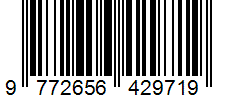Kegagalan sistem perpajakan dalam menekan peredaran rokok ilegal di indonesia
DOI:
https://doi.org/10.26905/j.bijak.v7i1.15051Keywords:
Fiscal reform, Illegal cigarette, Tax gap, Taxation, Tobacco exciseAbstract
The circulation of illegal cigarettes in Indonesia is a form of failure in the taxation system, particularly in the management and supervision of tobacco excise. This journal highlights how the complexity of the excise tariff structure, the low fiscal compliance of industry players, and the lack of data integration and digitalisation in tax administration are the main factors causing the widespread practice of illegal cigarettes. The inefficiency of the tax system has created loopholes that are exploited for excise evasion and embezzlement, which has a direct impact on the formation of the tax gap between the potential and realisation of state revenue. Using an empirical juridical approach, this study reveals that the main solution is not solely in the law enforcement aspect, but rather in the need to reform the excise tariff structure, simplify fiscal regulations, increase tax literacy, and optimise technology in supervision. Reorganising the tobacco taxation system is a strategic key to improving fiscal effectiveness and reducing the circulation of illegal products in a sustainable manner.
Downloads
References
Ispriyarso, B. (2020). Automatic Exchange of Information (AEOI) dan Penghindaran Pajak. Masalah-Masalah Hukum, 49(2), 172–179. 10.14710/mmh.49.2.2020.172-179
Kusuma, M. D. A., & Adrison, V. (2024). Ad Valorem Tax versus Specific Excise Tax: Tobacco Price Variability in Indonesia. Journal of Tax Reform, 10(3), 475–492.
Musgrave, R. A., & Musgrave, P. B. (1980). Public finance in theory and practice. McGraw-Hill.
Nafi’ah, B. A. (2021). Strategi Kebijakan Kenaikan Tarif Cukai Hasil Tembakau Dalam Rangka Menekan Konsumsi Rokok Indonesia. Journal of Governance and Administrative Reform, 2(1). https://doi.org/10.20473/jgar.v2i1.30662
Narasara, G. D. R., & Widyawati, D. (2023). Pengaruh Pengawasan, Tarif Cukai, dan Batasan Minimum Harga Jual Eceran terhadap Tangkapan Rokok Ilegal. Bina Ekonomi, 27(2), 124–140. https://doi.org/10.26593/be.v27i2.6002.124-140
Nur Azizah, E., & Subur Purwana, A. (2021). Pengaruh Kebijakan Tarif Cukai Hasil Tembakau dan Aktivitas Pengawasan Terhadap Peredaran Hasil Tembakau Ilegal. Jurnal Perspektif Bea dan Cukai, 5(1). https://doi.org/10.31092/jpbc.v5i1.1151
Santoso, D. B., & Erlando, A. (2020). Tobacco excise tax policy in Indonesia: Who does reap the benefits? Entrepreneurship and Sustainability Issues, 8(1), 1108–1124.
Suprihanti, A., Harianto, H., Sinaga, B. M., & Kustiari, R. (2018). Dinamika konsumsi rokok dan impor tembakau Indonesia. SEPA: Jurnal Sosial Ekonomi Pertanian dan Agribisnis, 14(2), 183–194. https://doi.org/10.20961/sepa.v14i2.25016
Susanto, E., Sinaulan, R. L., & Khalimi, K. (2021). Analisis Efektivitas Hukum dalam Kebijakan Pengawasan di Bidang Kepabeanan dan Cukai pada Kantor Pengawasan dan Pelayanan Bea dan Cukai Tipe Madya Pabean C Jayapura. Transparansi: Jurnal Ilmiah Ilmu Administrasi, 4(2). https://doi.org/10.31334/transparansi.v4i2.3005
Triadi, I., & Supriyadi, M. W. (2024). Politik Hukum Keuangan Negara di Bidang Perpajakan dalam Perspektif Bela Negara. Hukum Dinamika Ekselensia, 6(4).
Varian, & Jenni. (2023). Pengaruh Kesadaran Wajib Pajak, Sosialisasi Perpajakan dan Sanksi Pajak terhadap Kepatuhan Wajib Pajak Pelaku Usaha Mikro Kecil dan Menengah (Studi Kasus di Kecamatan Pinang 2022). Jurnal Akuntansi, 2.
Downloads
Published
How to Cite
Issue
Section
License
Copyright (c) 2025 Jurnal Ilmiah Bisnis dan Perpajakan (Bijak)

This work is licensed under a Creative Commons Attribution-NonCommercial 4.0 International License.
Authors who publish in JURNAL BISNIS DAN PERPAJAKAN (BIJAK) agree to the following terms:
- Authors retain copyright and grant the journal right of first publication with the work simultaneously licensed under Creative Commons Attribution License that allows others to share the work with an acknowledgment of the work's authorship and initial publication in this journal.
- Authors are able to enter into separate, additional contractual arrangements for the non-exclusive distribution of the journal's published version of the work (e.g., post it to an institutional repository or publish it in a book), with an acknowledgment of its initial publication in this journal.
- Authors are permitted and encouraged to post their work online (e.g., in institutional repositories or on their website) prior to and during the submission process, as it can lead to productive exchanges, as well as earlier and greater citation of published work (See The Effect of Open Access)
JURNAL BISNIS DAN PERPAJAKAN (BIJAK) - D3 Akuntansi, Fakultas Ekonomi dan Bisnis, Universitas Merdeka Malang Published by University of Merdeka Malang, is licensed under a Creative Commons Attribution-ShareAlike 4.0 International License.






